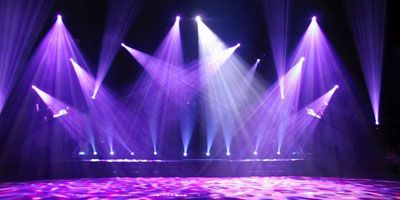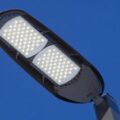“What light through yonder window breaks? It is the east, and Juliet is the sun.”
The famous balcony scene from William Shakespeare’s Romeo and Juliet is a notoriously difficult scene to light. Too bright and Juliet is a silhouette, too dark and she is in shadow. Traditional stage lighting rigs which use halogen lamps or high-intensity discharge lamps can be harsh. A good and controllable alternative is LED lighting. LED instruments can contain a number of different coloured LED light bulbs, often red, green and blue, and by adjusting the intensity of each LED colour group, different colours can be achieved. This makes it easier to attain just the right subtle wash of romantic colours to show Juliet in her best light.
Stage lighting can almost go unnoticed by theatregoers; it is often an unappreciated art. Without it, not only would the action be harder to see, a complete element of the performance would be lost. Lighting helps tell the story and underlines mood and theme, directly affecting the emotion and subtext of each scene, turning day to night and happiness to horror.
Good lighting has always played an important part in the theatre. In ancient Greece, the home of tragedy and comedy, most plays were staged in daylight. This simplified production and took full advantage of the sunshine. Of course, that’s fine in sunny climes, but Shakespeare’s London was a different kettle of fish. The Globe Theatre staged both afternoon and evening performances, and the stage lighting of the time was far removed from today’s LED technology. It encompassed everything from the candles of the footlights, to the use of torches, lanterns, and even cloth and paper coverings to allow more control from scene to scene.
Today’s LED stage lighting tools would seem like magic to those early lighting experts. Gone are the candles, gaslight and incandescent lamps used in Victorian theatres. Today a combination of technology and creativity allows lighting designers to let their imaginations run wild. Light has become part of the performance, and the work of the lightboard operator is very much an interactive dance requiring its own choreography.
Fresnels, ellipsoidal spots, follows, par lamps, and of course the super trouper are all essential to the success of any performance. LED stage lights come in three main types – PAR cans, strip lights and moving head intelligent lighting. In LED PAR cans, a round printed circuit board mounted with LED light bulbs is used in place of a PAR lamp. Moving head types can either be a bank of LED light bulbs mounted on a yoke or more conventional moving head lights with the bulb replaced with an LED bank.
LED light bulbs are increasingly replacing conventional theatre lighting fittings, and some shows, such as Radiohead’s recent tour, have used only LED lighting. LED light bulbs have become popular for lighting cycloramas, or as top, side or back lighting. And as far as performance is concerned, incandescent lighting simply can’t compete with LED. An LED using as little as 4.5 watts still produces the same lumen output as a 50 watt halogen, making it cost effective in any brightly lit theatre.
Today’s Romeos no longer have to worry about sweating and make-up running down their faces – thanks to the environmentally sound, durable, safe, and low-heat LED light bulbs. Which goes to prove LED light bulbs can be romantic too.
Date: October 9, 2012
Tags: led leds Lighting
Traditional stage lighting rigs which use halogen lamps or high-intensity discharge lamps can be harsh. A good and controllable alternative is LED lighting.




